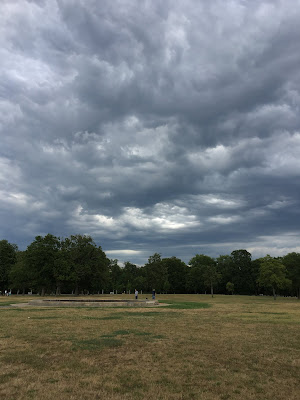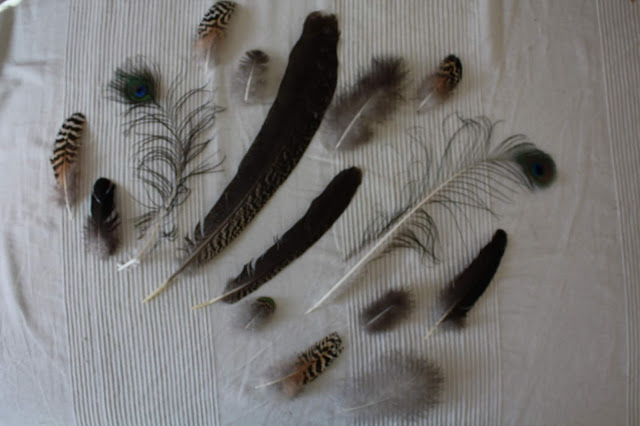The wonderful world of cloud formation
This summer I decided to start observing clouds more carefully as a way to understand their forms and better represent them in my work. I began taking pictures of them at different times of day and under differing weather conditions. And what started as an idea that I thought could be carried out in a short time quickly became a fascination. I began to observe that the times of day, weather, and proximity to water were major contributors to cloud formation.
What really sparked my interest was when I started snapping pictures on my way back to from Vienna to Graz. As the landscape changed so did the clouds. Sounds obvious, doesn't it? But I was amazed by how much variation occured between valleys based partially on the levels of humidity, and mist. the difference in temperature between hills, trees, and sky all seemed to contribute. I gathered around 200 images on that trip. At home I found it difficult to sift through them as the clouds and constellations of clouds were ever changing.
Thinking I had probably captured a substantial collection of the most common types of cloud formations, I planned to take a just a few more snapshots on the Italian trip for comparison. However, soon after we crossed the border it became appearant that altitude, latitude, and longitude play a role as well. I began to take pictures as we made our way down the west coast. Working our way back up the East coast on the way home offered about 500 more photos for an already substantial collection.
Flipping through my photos I began to categorize them at least broadly.
There are about 8 basic types of cloud formation:
These are then seperated into categories based on where they are located in the sky.
Highest:
cirrocumulus, cirrus, and cirrostratus
Middle hight:
altocumulus and altostratus
Lowest (near the horizon):
stratus, cumulus, and stratocumulus
To break these terms down in a non scientific way, the cumulus ones tend to be billowy whereas anything with the word stratus is flat and blanket- like (similar to a stratus or layer of earth (soil)).
Cirrus are streaky.
Here are a couple of examples of the basic types:
Cirrocumulus:
Cumulus:
Altocumulus:
Stratus:
Cirrus:
Since this is not a scientific post but rather a categorization of basic cloud shapes for the purpose of painting, I will not go into more detail about the clouds themselves but will rather suggest viewing them as basic shapes.
The 'round' clouds can be seen alone or in groups:
They can be found in the middle of the sky:
Or coming up from the horizon or from behind a mountain:
At sunrise and sunset they often reflect the golden, pink, or orange light from the bottom:
Storm clouds are often 'flatter', they tend to be dark at the bottom and appear heavy with rain.
A bright sunny day where the air is 'light' due to sea breezes, high altitude of dry air often produces clouds that are light and breezy themselves. These often race across the sky. They are light and often change shapes as they move. They can be rendered quickly with a little paint and a dry brush. They have almost no shadow.
A hazy day might create similar cloud tapes but more of them. Sometimes in an almost solid mass.
Higher humidity combined with warm sun creates either larger or smaller cumulus clouds. These are shaded at the bottom but not enough to appear heavy.
A cold and damp morning turning into a sunny day can produce two distinct cloud formations as the heavy fog like layer disperses. This was one of the most exciting photos I took during the project.
When the weather changes for the worse the clouds thicken, part of them are a bit darker than the others. The rest of the sky remains bright for a time.
Here are a few more photos:
Have you spent time considering the types of clouds in the sky at different times of day and year? If not I would encourage you to look up once in a while. Clouds can be fascinating to observe.
To get posts as soon as they are published click on the subscribe button at the top of the page or Follow by clicking on the follow button.
If you enjoyed this post you might also like:
-Painting Fluffy Clouds
-How to take and use reference photos
- Personal project Black and white photos





















































Comments
Post a Comment